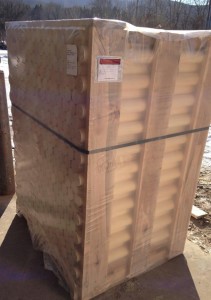Specifications
Grades & Weights
There are no published wood grading rules for bat billets. Therefore, grade names and inclusions can vary somewhat from each location subject to the rules that have been established and the people applying them. However, the top grade is the most straightforward and each mill has only one or two designated graders to make sure that grades are consistent and reliable over time.
“A” Grade (also known as Pro or Prime grade) is commonly defined by a minimum of 20 inches of straight grain from the handle end, with no defects and minimal grain deviation in the barrel. Other solid wood grades include B grade, Select grade, Mill Run, Youth, Trophy, Shorter lengths (31 to 34-inch) and Heavies. Please contact us for more details on each grade.
We offer both weighed and unweighed billets and would be more than happy to discuss each option with you as well as the sourced regions.
Drying Methods and Moisture Content
The majority of our bat billets are vacuum kiln dried but some are still kiln dried using more traditional (or conventional) methods. There are pros and cons to both processes, but both result in properly dried wood. Vacuum kilns provide a much faster drying cycle but each charge volume is small. The vacuum removes the air so no oxidation occurs in the wood for a much whiter appearance in most species. The vacuum also allows for lower temperatures to be used, which enables the cells to remain open while keeping the stress low for long-term stability and straightness. For large solids, this drying process takes as little as two weeks.
Conventional kiln drying is a combination of air flow with fans, steam, vents, heat and sometimes de-humidification technology. The process is much slower than vacuum kiln drying but the charge volumes are typically ten times the size. The heat and fans are turned on and off throughout the cycle to keep the cells open and the wood relaxed for long-term stability and straightness. For large solids, this drying process can take up to three months. The finished wood will be closer to its natural color and typically two to three color shades from vacuum dried wood.
All of our bat billets are dried to an average moisture content (MC) of 6 to 8% for Maples and Birch, and an average of 8 to 10% for Ash, Hickory and European Beech. Since wood bat billets are an important investment, we highly recommend that every bat maker have a controlled storage room that maintains a relative humidity between 35 to 50% at 60° F. This will equalize the moisture throughout each billet and keep the wood relaxed to eliminate warping. We recommend keeping your billets in a controlled environment for a minimum of two or three weeks prior to weighing or turning.
To learn more or place an order, please contact us. We’re here to help you choose the right bat billets to suit your product’s needs.